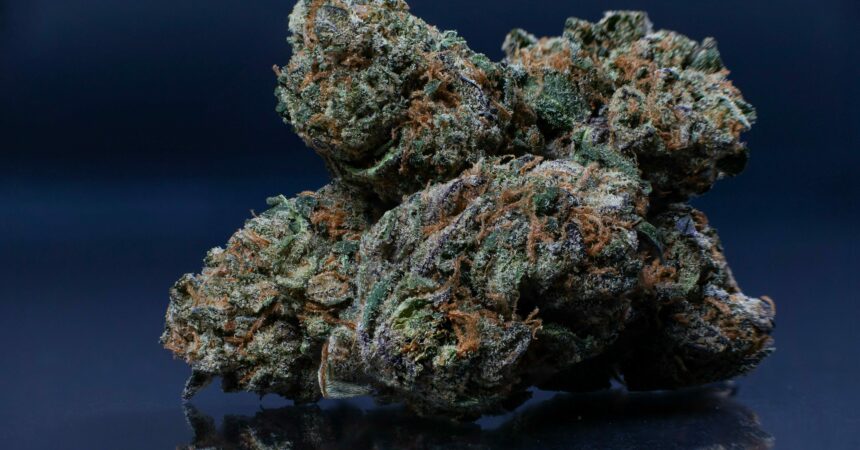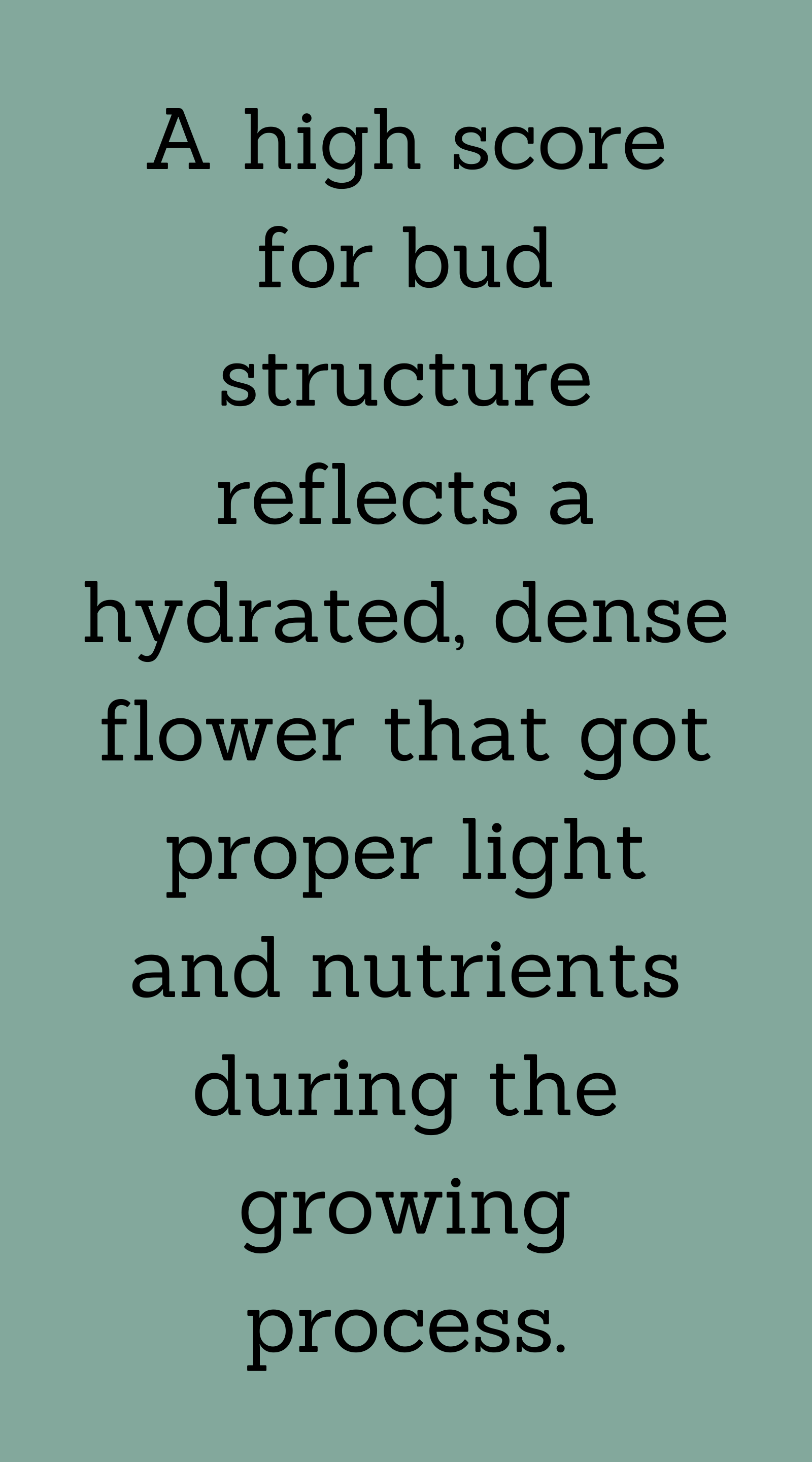Grading explained: How is the structure of cannabis graded?

By Dan Cohn
Density. Ratios. Moisture content — things you might study for your high school chemistry exam; but in the world of cannabis, these qualities help to determine the score for the structure of a bud. How it feels and how it looks goes far beyond simple cosmetics. Bud structure reveals growing conditions, curing technique and attention to detail, which is why Big Tree includes it as one of its four main grading qualities.
Graders employ a visual and physical examination of cannabis to determine density, dryness and trim quality. Daniel Wendling, senior grader at Big Tree, says “We look at the whole lot. The amount of leaf material in that lot will affect your structure score. If the lot has 0-10% of trim in the bottom of the lot, and you hardly see any leaf at all, that will give you a good, high score. But anything that’s 10-20% or so of leaf material in that lot, that’s going to lower your structure score, quite significantly as you get up to the 30% or more of trim. Anything above 30% we’re going to call ‘mixed material’, which is a whole different product, technically.”
The structure grade is really about the buds. Another cannabis grader with Big Tree, says they start the inspection by looking for any defects, over trim and generally seeing how the bud holds up. Is it dense? Is it tightly packed? Is it loose? They also look to see whether A-flower has been separated from B-flower.
DETAILS IN DENSITY
A bud is made up of many tiny flowers and the space (or lack thereof) between them constitutes a flower’s denseness. A nice, tight bud received the proper amount of light and nutrients and benefits from good genetics. Too much density, though, can be a negative quality. Wendling says “Improper curing will actually cause mold inside of the bud. So that’s something you’re going to look for if the bud is too dense.” Light cycle issues, such as exposure to light during the dark phase, or too much of or the wrong kind of nutrients at different growing phases will produce abnormal or “airy” bud structures. The “bract-to-leaf ratio” is how graders judge denseness.

The curing and drying process is when a plant’s moisture content evaporates, losing up to 80% of its water weight. Producers walk a fine line trying to achieve the proper moisture content. The drier it gets, the more the bud will start to crumble apart. It will also begin to lose its smell. Bud that’s too dry will be harsh to smoke. Graders look for the flower to retain a bit of ‘squish,’ and the stem should be pliable, but not wet.
Graders inspect the quality of the trimming, which can either accentuate a well-grown flower or potentially try to hide defects. The trim should highlight the flower, not shape it, so it looks as natural as possible. Sometimes in the growing process, rogue ‘fingers’ can grow out of a bud, or mold may develop, which can be trimmed away to conceal these flaws. Graders are able to tell when they are intentionally cut away. Any excess leaves or stems left showing can negatively affect the structure score.
QUALITY AND PROFIT
A high score for bud structure reflects a hydrated, dense flower that got proper light and nutrients during the growing process. It’s not over trimmed, but rather highlights the flower with no seeds, stems or extra leaves showing. A low score for bud structure follows the presence of surplus shake or small buds in the lot. Deformities like fingers and looseness could be signs of light or nutrient stress.

Bud structure affects the Fair Market value of a product in many ways. Like the grade for color, structure has a direct effect on bag appeal, meaning if it doesn’t look good, it won’t be worth as much. Wholesale flower that’s well-trimmed will get a higher market value since the buyer won’t have to trim it themselves and it’s ready to go in the jar. Leaving more leaves and stems for the buyer to handle means more work and drives the overall cost down, unless they use it for joints or extract. Also, the airier the bud, the less it’s valued. Density is crucial for a high structure score.
Bud structure isn’t as obvious to the untrained eye or nose as color, aroma or trichome content, but it carries serious weight. Attention to detail blossoms into beautiful buds that consumers expect and appreciate, and Big Tree’s grading ensures everyone in the supply chain knows exactly what can be expected.
Read more in the Grading Explained series:
How is the aroma of cannabis graded?
How is cannabis color graded?
How is cannabis trichome content graded?

Dan Cohn is a drummer, audio engineer and music aficionado who enjoys using cannabis to fuel thoughtful conversation, critical listening and relaxing. The first time he made weed brownies, he cut the whole pan into six mega brownies and ate one before a friend's 18th birthday bowling party. He didn't make it to the party.
